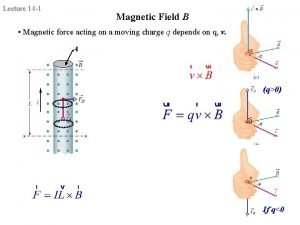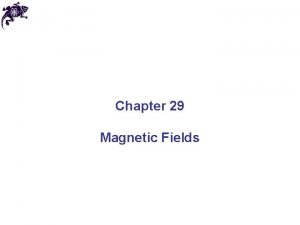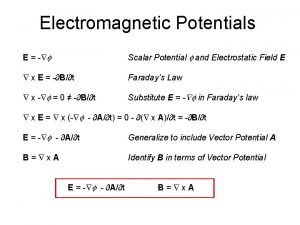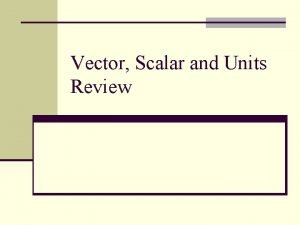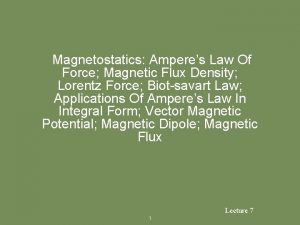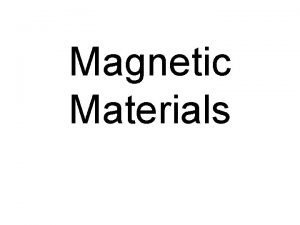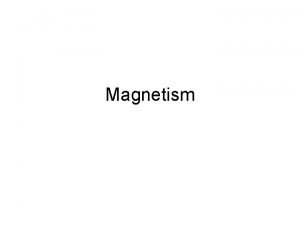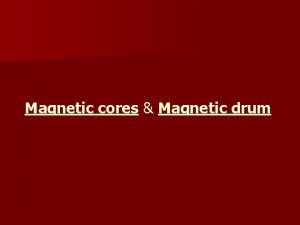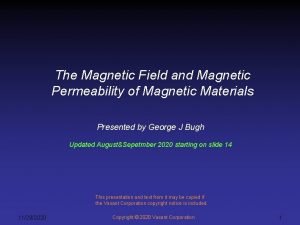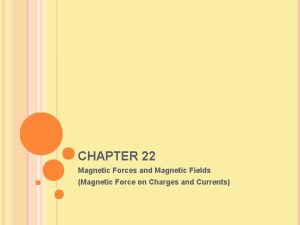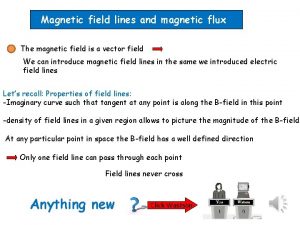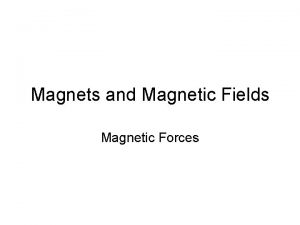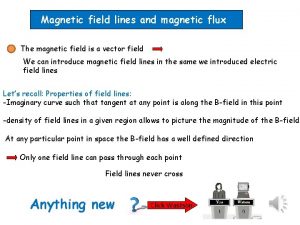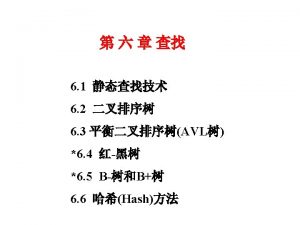MAGNETIC VECTOR POTENTIAL Class Activities Vector Potential One
























- Slides: 24

MAGNETIC VECTOR POTENTIAL

Class Activities: Vector Potential

One of Maxwell’s equations, to define a scalar potential V, where made it useful for us Similarly, another one of Maxwell’s equations makes it useful for us to define the vector potential, A. Which one?

Can add a constant ‘c’ to V without changing E (“Gauge freedom”): constant = 0, Can add any vector function ‘a’ with xa=0 to A without changing B (“Gauge freedom”) x (A+a) = x A + x a = x A = B 0

5. 25 In Cartesian coordinates, this means: , etc. Does it also mean, in spherical coordinates, that A) Yes B) No

5. 25 b Can you calculate that integral using spherical coordinates? A) Yes, no problem B) Yes, r' can be in spherical, but J still needs to be in Cartesian components C) No.

MD 12 -3 z The vector potential A due to a long straight wire with current I along the z-axis is in the direction parallel to: I Assume Coulomb gauge A=?

MD 12 -4 a, b A circular wire carries current I in the xy plane. What can you say about the vector potential A at the points shown? At point a, the vector potential A is: A) Zero B) Parallel to x-axis C) Parallel to y-axis D) Parallel to z-axis E) Other/not sure… z b a Assume Coulomb gauge, and A vanishes at infinity y I x At point b, the vector potential A is: A) Zero B) Parallel to x-axis C) Parallel to y-axis D) Parallel to z-axis E) Other/not sure

AFTER you are done with the front side: The left figure shows the B field from a long, fat, uniform wire. What is the physical situation associated with the RIGHT figure? A) A field from a long, fat wire B) A field from a long solenoid pointing to the right C) A field from a long solenoid pointing up the page D) A field from a torus E) Something else/? ? ?

5. 27 b Suppose A is azimuthal, given by (in cylindrical coordinates) What can you say about curl(A)? A) curl(A) =0 everywhere B) curl(A) = 0 everywhere except at s=0. C) curl(A) is nonzero everywhere D) ? ? ?

5. 24 If the arrows represent the vector potential A (note that |A| is the same everywhere), is there a nonzero B in the dashed region? A. Yes B. No C. Need more information to decide

What is A) The current density J B) The magnetic field B C) The magnetic flux B D) It's none of the above, but is something simple and concrete E) It has no particular physical interpretation at all

5. 28 When you are done with p. 1: Choose all of the following statements that are implied if Choose boundary for conditions any/all closed surfaces (I) (III) A) (I) only B) (II) only C) (III) only D) (I) and (II) only E) (I) and (III) only

6. 11 I have a boundary sheet, and would like to learn about the change (or continuity!) of B(parallel) across the boundary. B(above) B//(above) Am I going to need to know about A) B) C) ? ? ?

5. 28 b In general, which of the following are continuous as you move past a boundary? A) A B) Not all of A, just Aperp C) Not all of A, just A// D) Nothing is guaranteed to be continuous regarding A

DIPOLES, MULTIPOLES

5. 29 The formula from Griffiths for a magnetic dipole at the origin is: Is this the exact vector potential for a flat ring of current with m=Ia, or is it approximate? A) It's exact B) It's exact if |r| > radius of the ring C) It's approximate, valid for large r D) It's approximate, valid for small r

5. 30 The leading term in the vector potential multipole expansion involves What is the magnitude of this integral? A) R B) 2 R C) 0 D) Something entirely different/it depends!

This is the formula for an ideal magnetic dipole: What is different in a sketch of a real (physical) magnetic dipole (like, a small current loop)?

E-field around electric dipole B-field around magnetic dipole (current loop) From Purcell, Electricity and Magnetism

MD 12 -5 Two magnetic dipoles m 1 and m 2 (equal in magnitude) are oriented in three different ways. m 1 1. 2. 3. m 2 Which ways produce a dipole field at large distances? A) None of these B) All three C) 1 only D) 1 and 2 only E) 1 and 3 only

MD 12 -7 The force on a segment of wire L is A current-carrying wire loop is in a constant magnetic field B = B z_hat as shown. What is the direction of the torque on the loop? A) Zero B) +x C) +y D) +z E) None of these z I(out) B y x B I(in) z I y

6. 1 Griffiths argues that the torque on a magnetic dipole in a B field is: How will a small current loop line up if the B field points uniformly up the page?

6. 2 Griffiths argues that the force on a magnetic dipole in a B field is: If the dipole m points in the z direction, what can you say about B if I tell you the force is in the x direction? A) B simply points in the x direction B) Bz must depend on x C) Bz must depend on z D) Bx must depend on x E) Bx must depend on z
 Multipolar expansion
Multipolar expansion Remanent magnetization
Remanent magnetization Weber magnetism
Weber magnetism Magnetic moment and magnetic field relation
Magnetic moment and magnetic field relation F=i(lxb)
F=i(lxb) Magnetostatic field
Magnetostatic field Potential energy magnetic field
Potential energy magnetic field Electromagnetic potentials
Electromagnetic potentials Electric intensity is scalar or vector
Electric intensity is scalar or vector Fundamental laws of magnetostatics
Fundamental laws of magnetostatics Operating activities vs investing activities
Operating activities vs investing activities Sports indoor and outdoor
Sports indoor and outdoor Support activities and primary activities
Support activities and primary activities Primary activities and secondary activities
Primary activities and secondary activities One empire one god one emperor
One empire one god one emperor Little dog run
Little dog run One king one law one faith
One king one law one faith Byzantine definition
Byzantine definition Ford one plan
Ford one plan See one do one teach one
See one do one teach one One price policy
One price policy Twelfth night speeches
Twelfth night speeches Studiendekanat uni bonn
Studiendekanat uni bonn Asean tourism strategic plan
Asean tourism strategic plan Asean one vision one identity one community
Asean one vision one identity one community





